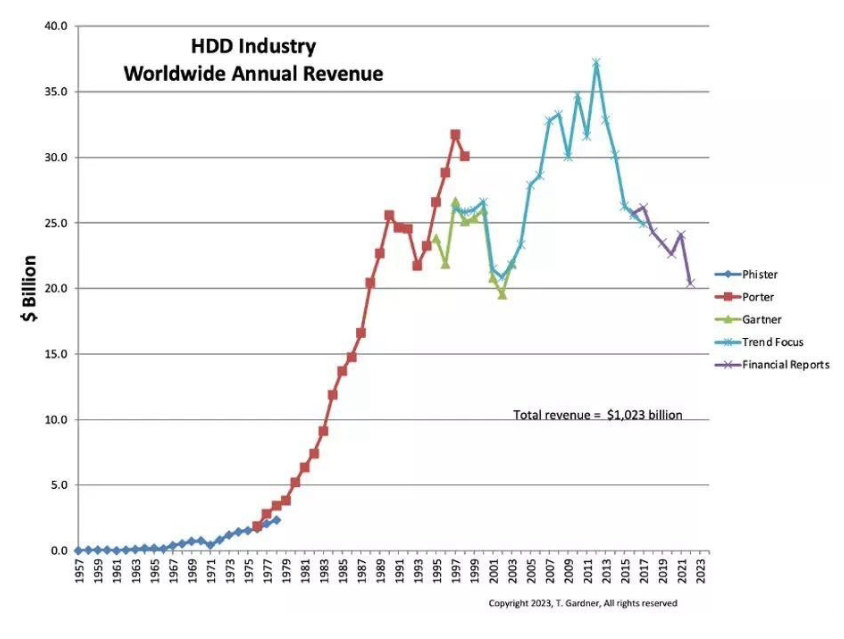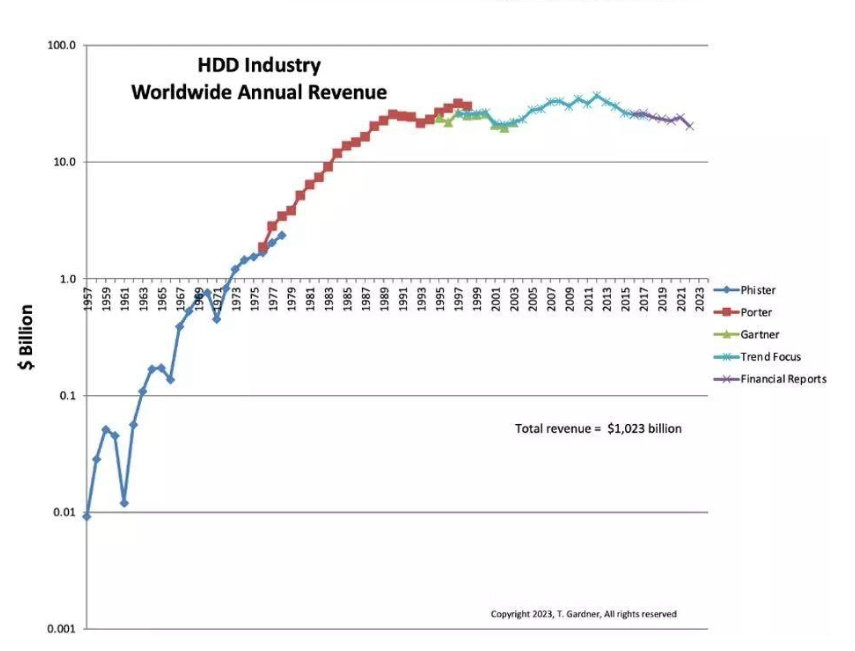Mechanical hard drives are about to enter their "golden age", a review of the ups and downs of nearly 70 years
IBM released the world's first computer hard drive in 1956, which was larger than a refrigerator, weighed over a ton, and looked similar to a large-scale cylindrical air conditioning unit. This pioneering hard drive is called IBM305RAMAC, short for Random Access Computing Control. At that time, IBM, after five years of research and development, finally emerged in 1956, causing a sensation in the entire technology industry.
The chart combines various data sources such as Montgomery Physicer and shows that the annual revenue of the mechanical hard disk industry only achieved breakthrough growth in the 1980s. In the decade of the 1980s, annual income increased from approximately $4 billion to over $20 billion; In the 1990s, there was also some growth, but the predictability of income was much worse and the volatility was greater. According to Gartner and TrendFocus's observations, industry revenue declined in the first half of the 2000s, but by the mid-2000s, the market had stabilized and continued to grow, reaching a peak of approximately $37 billion in 2012.
Coughlin pointed out that this may be related to the widespread floods in Thailand the previous year, which caused hard drive prices to peak in 2012.
 According to Coughlin, the shipment volume of the hard disk industry reached its peak in 2010, with a shipment volume of 651 million blocks. In contrast, the shipment volume of hard drives in 2022 was only 172 million pieces, and the estimated shipment volume in 2023 is about 127 million pieces, with a total capacity of less than 900EB.
According to Coughlin, the shipment volume of the hard disk industry reached its peak in 2010, with a shipment volume of 651 million blocks. In contrast, the shipment volume of hard drives in 2022 was only 172 million pieces, and the estimated shipment volume in 2023 is about 127 million pieces, with a total capacity of less than 900EB.
Since 2012, due to the rise of solid-state drives, hard drive revenue has been on a downward trend. But this situation may change this year, as Coughlin believes that the growth in storage demand from artificial intelligence may drive the growth of revenue from mechanical hard drives.


